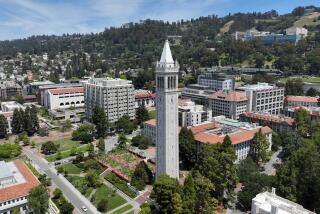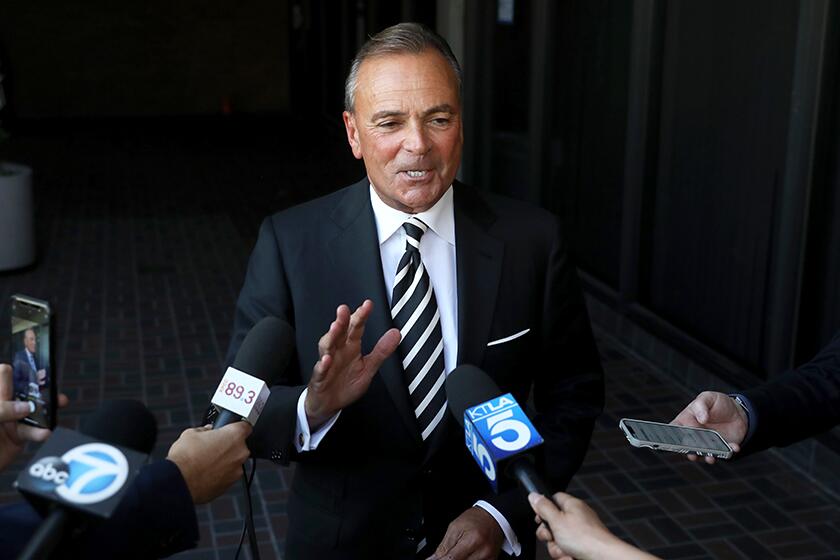Fewer of State’s Students Entering College Directly From High School
- Share via
Rising percentages of young adults have enrolled in college since the early 1990s but fewer, particularly in California, are heading there directly from high school, according to an analysis released Tuesday.
The report, prepared by the nonprofit National Center for Public Policy and Higher Education, found that teenagers are entering college in smaller percentages even though high schools have done a better job over the last decade in providing college preparatory courses.
Patrick M. Callan, president of the San Jose-based center, said the group’s “Measuring Up 2004” report did not investigate the reasons for the enrollment patterns. But he speculated that many students are entering college after voluntarily taking a year or more off of school, or after losing jobs.
The failure of students to enter college immediately after high school is a concern, given the nation’s need for an increasing number of college graduates to remain economically competitive, Callan said. Research has found that students who start college later are less likely to earn degrees. In addition, those who succeed in getting degrees spend more time in school.
According to the report, the percentage of California students entering college by age 19 fell from 35.2% in 1992 to 32.1% in 2000, the most recent year for which figures are available.
Nationally, over the same eight-year period, the enrollment figure fell from 38.7% to 37.5%.
The declines in California appeared to stem from students dropping out of high school in large numbers and, in particular, the lower percentages of high school graduates heading to college.
Nationally, according to the center’s analysis, the pattern apparently stemmed solely from the rising number of high school dropouts.
In California during 2002, 38.5% of those aged 18 to 24 were in college, up from 32.1% in 1992. Nationally, the enrollment percentage of those older students climbed to 33.8%, from 32.5% in 1992.
Callan said the larger number of Californians in college probably stemmed in part from the state’s extensive network of community colleges. He also said the state’s relatively weak economy may have prompted workers to head back to school for job retraining.
Overall, the report found that higher education opportunities for students have improved in California since the early 1990s, when the state’s colleges and universities, and their students, were hit hard by state spending cutbacks and fee hikes.
But Callan and California educators who joined him in a news conference to discuss the report said recent rounds of fee hikes and program cutbacks at the state’s colleges and universities threaten to wipe out that progress.
More to Read
Sign up for Essential California
The most important California stories and recommendations in your inbox every morning.
You may occasionally receive promotional content from the Los Angeles Times.










